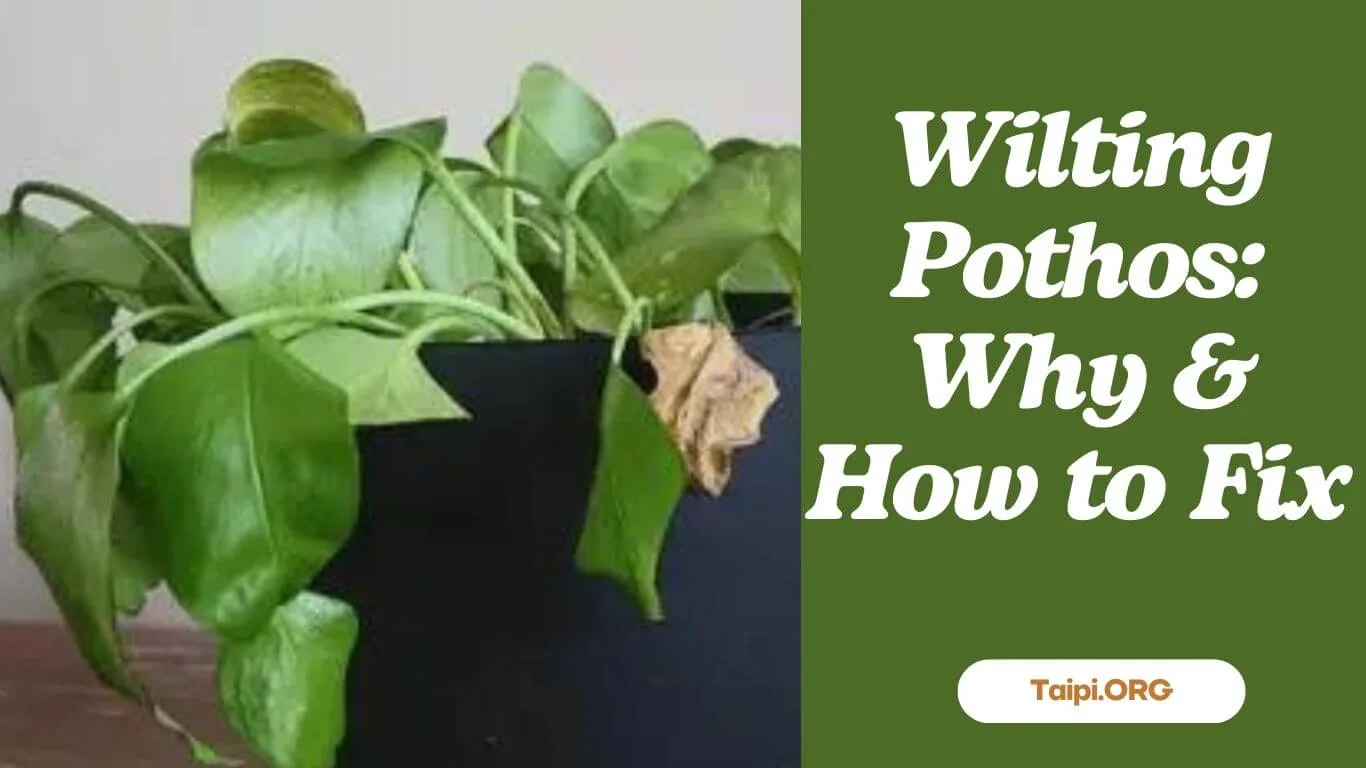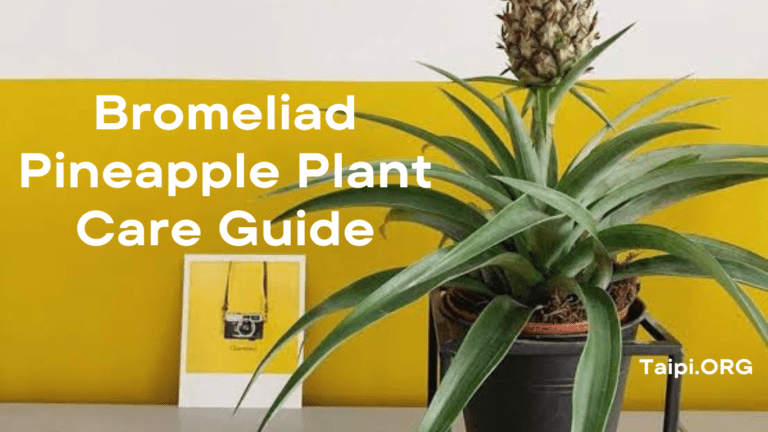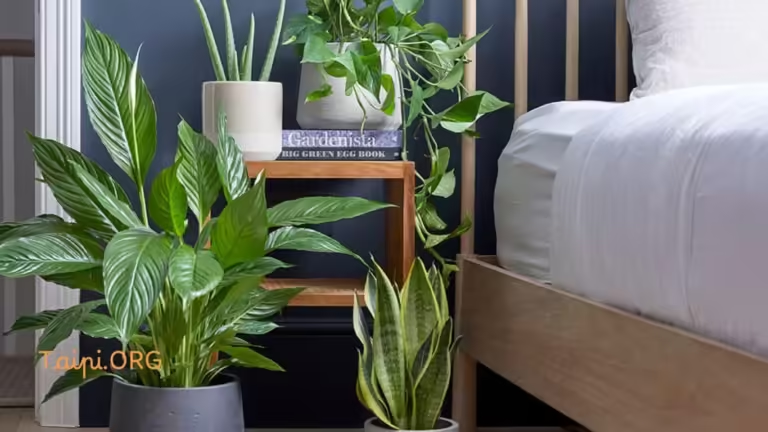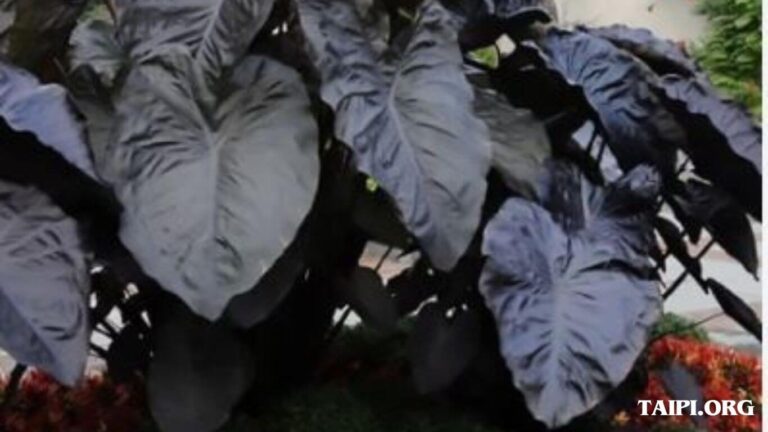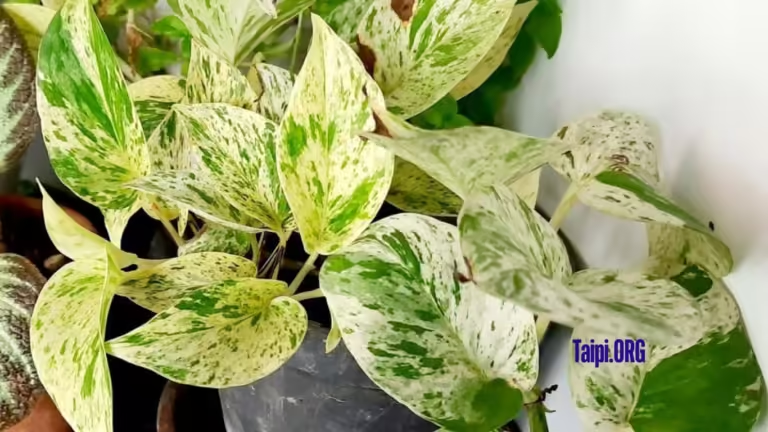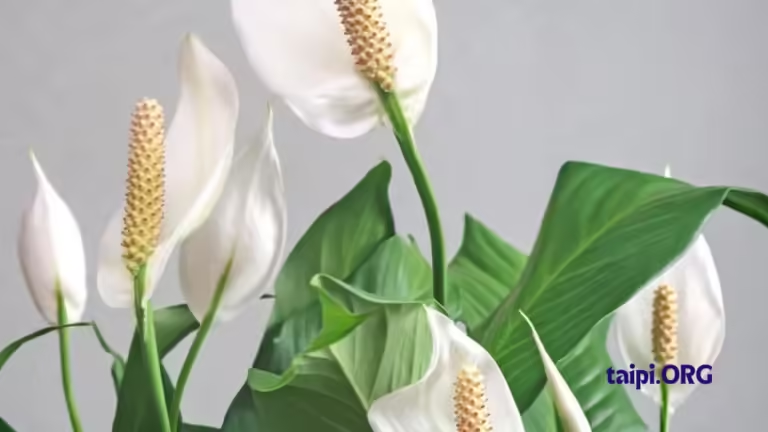Wilting Pothos: Causes and Fixes
MANY people cherish the pothos plant for its resilience and lush foliage, making it a favorite among beginner gardeners. However, encountering a wilting Pothos can be disheartening, hinting at underlying issues demanding attention.
But don’t lose hope yet, for I am about to show you how you can fix a wilted pothos. Before then, I will discuss the common causes that lead to your pothos wilted.
Your wilting pothos is a visible indicator of water stress and physiological response to environmental conditions.
The full list of causes of wilting pothos include:
- Unbalanced water
- Low humidity
- Root overgrowth
- Pest and insect infestation
- Nutritional deficiency
- Repotting stress
Before we discuss how each of these causes affects your pothos, here is something else you must know:
What is Wilting in Plants
Wilting of plants refers to the loss of turgidity and drooping of leaves, stems, or entire plant structures due to inadequate water uptake or excessive water loss.
It occurs when the balance between water uptake from the soil and water loss through transpiration is disrupted, leading to cellular dehydration and decreased rigidity in plant tissues.
Wilting is primarily a physiological response by plants to water stress or environmental factors that affect water availability.
When plants experience water scarcity or unfavorable environmental conditions such as high temperatures, low humidity, or strong winds, they regulate water movement to conserve moisture and maintain hydration.
The process of wilting begins with the closure of stomata, (tiny pores on the surface of leaves), to minimize water loss through transpiration.
As water availability declines, cells lose their turgor pressure, which is essential for maintaining cell structure and rigidity.
As a result, leaves and stems become limp and droopy, unable to support their weight.
NB. While wilting is often reversible and temporary, prolonged water stress can lead to irreversible damage and plant death. Therefore, it is crucial to address the underlying causes of wilting promptly by providing adequate water, improving soil moisture retention, and creating favorable growing conditions to support plant health and vitality.
7 Causes of Wilting Pothos
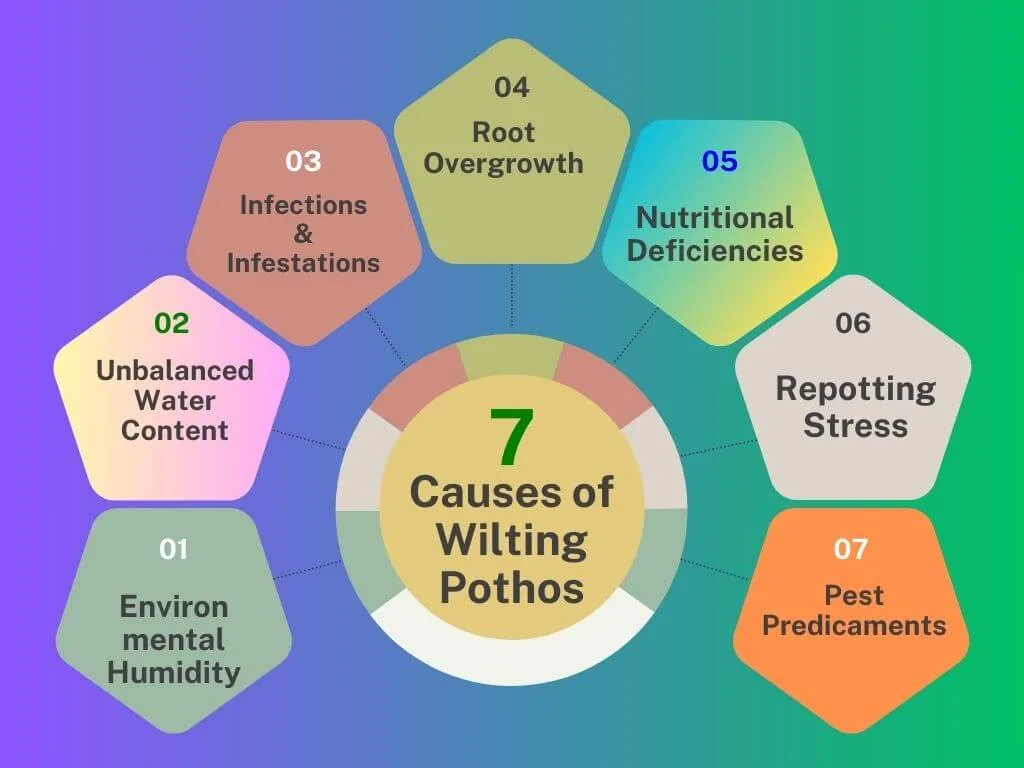
Now, it is time to look at each of the seven reasons you have wilted pothos in your house.
1. Unbalanced Water Content
Pothos plants, like all living organisms, thrive on proper hydration.
Insufficient watering can result in dry, wilted foliage while overwatering may lead to waterlogged soil and root rot.
Finding the right balance is essential for Potho’s health.
Monitoring the soil moisture regularly and adjusting watering frequency based on environmental conditions and plant needs can help prevent wilting due to water imbalance.
2. Environmental Humidity
Pothos leaves are susceptible to drying out in low-humidity environments. At the same time, dry air can cause the plant to lose moisture rapidly, resulting in wilted leaves.
Increasing humidity levels around the plant through methods such as using a humidifier (pictured ⬆), placing a tray of water nearby, or regularly misting the foliage can help alleviate wilting caused by environmental humidity issues.
3. Root Overgrowth
As Pothos plants mature, their root systems expand and may become root-bound in their containers.
Root overgrowth restricts the plant’s ability to absorb water and nutrients, leading to wilting foliage.
Checking the roots periodically and repotting the Pothos in a larger container with fresh, well-draining soil can prevent root overgrowth and promote healthy growth.
4. Infections and Infestations
Bacterial or fungal infections can weaken Pothos plants, causing leaves to wilt and discolor.
Common symptoms include dark spots or lesions on the foliage.
Additionally, pest infestations, such as spider mites or aphids, can feed on Pothos leaves, further compromising plant health.
Promptly addressing infections by pruning affected areas and applying appropriate fungicides or insecticides can help control the spread of disease and prevent wilting.
5. Nutritional Deficiencies
Pothos plants require essential nutrients like nitrogen, potassium, and phosphorus to thrive.
Nutritional deficiencies can result in weak, wilted foliage and overall poor plant health.
Regularly fertilizing the Pothos with a balanced fertilizer containing these nutrients can replenish soil nutrients and promote vibrant growth.
6. Pest Predicaments
Pests such as mealybugs, spider mites, and scale insects can infest Pothos plants, causing damage to the foliage and weakening the plant’s overall health.
Signs of pest infestation include webbing, visible insects, and yellowing or distorted leaves.
Employing integrated pest management techniques, such as manually removing pests, using insecticidal soap sprays, or introducing natural predators, can help control pest populations and prevent further wilting.
7. Repotting Stress
Repotting can stress Pothos plants, especially if you do it incorrectly or during sensitive growth periods.
Transplant shock may cause temporary wilting as the plant adjusts to its new environment.
Providing consistent care, avoiding excessive disturbances to the roots, and ensuring proper soil moisture levels can help minimize repotting stress and promote recovery.
How to Fix a Wilting Pothos
You cannot fix wilted pothos in a day. It will involve a process, which sometimes can go for weeks or months of consistent work. Nonetheless, it is doable.
Now, here are some of the things you can do to reverse the pothos wilted phenomenon:
Maintain Balanced Watering
Maintaining proper soil moisture levels is crucial for Potho’s health.
You can do that by watering the plant when the top inch of soil feels dry to the touch, ensuring thorough but not excessive watering.
Use pots with drainage holes to prevent waterlogged soil and root rot.
Increase Environmental Humidity
Enhance humidity levels around the Pothos plant by using a humidifier, placing a tray of water filled with pebbles beneath the plant pot, or regularly misting the foliage with water.
Root Maintenance
Periodically, check your pothos roots for signs of overgrowth or root-bound conditions. If root-bound, repot the Pothos in a larger container with fresh, well-draining soil, and gently loosen the roots to encourage healthy growth.
Combat Infections and Infestations
Identify and treat bacterial or fungal infections promptly by pruning affected areas and applying appropriate fungicides.
Control pest infestations by manually removing pests, using insecticidal soaps, or introducing beneficial insects.
Address Nutritional Deficiencies
Apply a balanced, water-soluble fertilizer formulated for indoor plants according to package instructions. Fertilize the Pothos every 4-6 weeks during the growing season to replenish essential nutrients.
Pest Management
Monitor the Pothos regularly for signs of pest infestation and take prompt action to control pests.
Avoid overuse of chemical pesticides, as they can harm beneficial insects and disrupt the plant’s ecosystem.
Manage Repotting Stress
Choose an appropriate time to repot Pothos plants, preferably during the growing season.
Handle the plant with care during repotting, and ensure proper watering and light conditions to support recovery.
Frequently Asked Questions (FAQs)
Q: Why are my Pothos leaves turning yellow and wilting?
A: Pothos leaves can turn yellow and wilt due to various factors, including overwatering, underwatering, inadequate light, root rot, or pest infestation. Assess the plant’s watering schedule, light exposure, and soil drainage to identify and address the underlying issue.
Q: Can Pothos plants recover from wilting?
A: Yes, Pothos plants can recover from wilting with proper care and attention. Addressing the underlying cause of wilting, such as watering issues, nutrient deficiencies, or environmental stressors, and providing the plant with optimal growing conditions can help facilitate recovery.
Q: How often should I water my wilting Pothos plant?
A: The frequency of watering for a wilting Pothos plant depends on factors such as environmental conditions, pot size, and soil type. Generally, water Pothos plants when the top inch of soil feels dry to the touch, ensuring thorough but not excessive watering to prevent root rot and wilting.
Q: Are wilting Pothos leaves a sign of root rot?
A: Wilting Pothos leaves can be a sign of root rot, especially if the soil is consistently wet and poorly draining. Check the plant’s roots for signs of mushiness, darkening, or foul odor, which indicate root rot. Repotting the Pothos in fresh, well-draining soil and adjusting watering practices can help mitigate root rot and revive the plant.
Q: What should I do if my Pothos plant continues to wilt despite watering?
A: If a Pothos plant continues to wilt despite adequate watering, consider factors such as light exposure, temperature fluctuations, nutrient deficiencies, or pest infestations. Ensure the plant receives sufficient indirect light, maintain consistent temperature and humidity levels, fertilize as needed, and inspect for signs of pests to address wilting effectively.
My Final Thoughts on Wilting Pothos
In conclusion, the sight of a wilting Pothos plant may seem daunting, but it serves as a gentle reminder of the delicate balance required for its care.
Understanding the causes behind wilting Pothos leaves empowers us to take proactive steps in nurturing these beloved green companions.
When faced with a wilting Pothos, it’s crucial to first identify the root cause, whether it be inadequate watering, insufficient light, or root-related issues.
By addressing these factors promptly, we can help revive the Pothos to its former lushness and vibrancy.
With proper attention to watering schedules, light exposure, and soil conditions, we can create an optimal environment for our Pothos to thrive.
By observing its response to our care and making necessary adjustments, we can cultivate a strong and resilient bond with our wilting Pothos.
In the journey of plant care, the resilience of a wilting Pothos reminds us of the beauty of growth and the transformative power of nurturing.
Through patience, understanding, and a touch of green-thumb magic, we can breathe new life into our wilting Pothos, fostering a flourishing connection with nature’s wonders.

